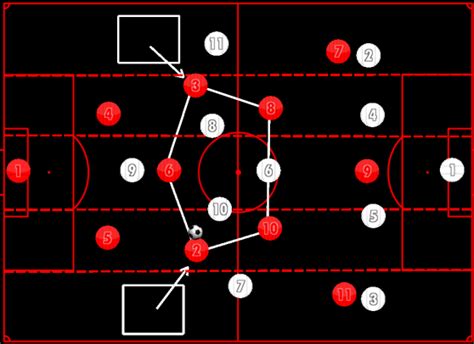The Rise of Hybrid Fullbacks: How Tactical Fluidity Is Redefining Defensive Roles
In modern football, fullbacks are no longer just wide defenders. Today, they’re tactical chameleons—drifting into midfield, controlling transitions, and anchoring possession structures. Known as inverted fullbacks, this role has become a key feature in elite systems, especially in the Premier League.
From Wide Defenders to Central Controllers
Pep Guardiola’s use of João Cancelo and Oleksandr Zinchenko revolutionized this concept at Manchester City. Fullbacks now step into midfield to form a 2-3-2-3 or 3-2-5 shape, supporting ball progression and central dominance.
“You control games not just with the ball—but by where your fullbacks stand.”
— Pep Guardiola
Tactical Advantages of Inverted Fullbacks
- Midfield Overloads: Occupying central zones ensures numerical superiority during build-up (e.g., 4v3).
- Rest Defense: Inverts allow teams to maintain a stable back three during possession, improving transition defense.
- Space Manipulation: With wide wingers, inverted fullbacks pull opponents inside, creating passing lanes and gaps.
Risks and Defensive Trade-Offs
- Flank Exposure: Shifting inside leaves channels open for fast breaks and long diagonals.
- IQ Dependency: Fullbacks must read space and time their recoveries—mistiming invites danger.
- Press Synchronization: Poor pressing coordination creates vertical gaps between fullback-midfield lines.
Top Tactical Case Studies
- Manchester City: Cancelo operates as a third midfielder, improving circulation and verticality.
- Liverpool: Alexander-Arnold’s central involvement boosts creativity and field coverage.
- Tottenham: Udogie and Porro show offensive upside—but also defensive risk under Postecoglou.
- Historic Models: Philipp Lahm (Bayern) and Noussair Mazraoui (Ajax) are early adopters of the hybrid mold.
Recruitment & Development Shifts
Elite clubs now seek fullbacks with attributes closer to central midfielders: tactical vision, progressive passing, and spatial intelligence. Academy systems adapt, training youth to alternate between flank and half-space roles dynamically.
Conclusion
Hybrid fullbacks are no longer luxury assets—they are strategic essentials. They blur lines between defense and build-up, offering a tactical edge in both phases. The future of football belongs to players who can switch roles in real time—and the inverted fullback leads that evolution.


